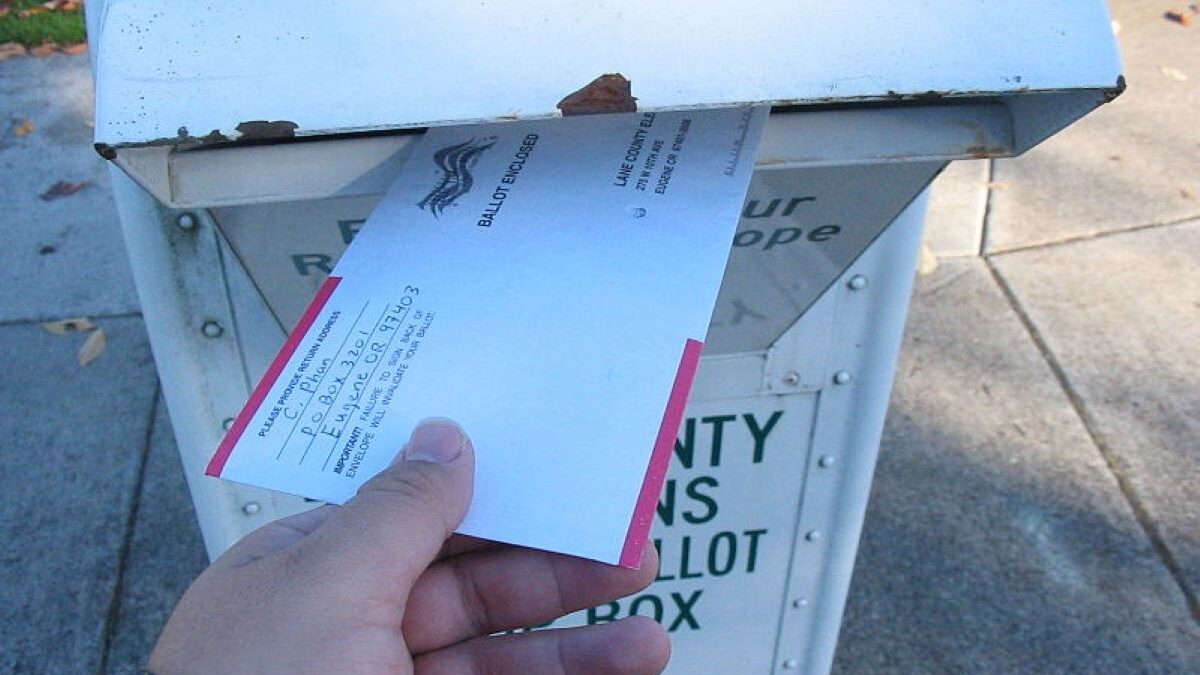The Ohio Supreme Court largely struck down an attempt to overhaul the language in a Republican-backed ballot amendment proposal on Monday that would raise the requirements to amend the state’s constitution.
On May 10, the Ohio General Assembly passed SJR 2, which would require future constitutional amendment proposals to receive approval from 60 percent of voters rather than a simple majority. The ballot initiative — also known as Issue 1 — would furthermore mandate initiative petitions for constitutional amendment proposals “be signed by at least five percent of the eligible voters of each county in the state” and “eliminate a provision allowing an insufficient initiative petition to be supplemented with additional signatures once the petition is filed with the secretary of state.”
As specified in Ohio law, the secretary of state is tasked with creating the title for any ballot amendment while the state ballot board must craft the proposal’s language.
Following the creation of the proposal — which was titled, “Elevating The Standards To Qualify For And To Pass Any Constitutional Amendment” — a group known as One Person One Vote and several Ohio residents filed a lawsuit seeking a court order “compelling the board to reconvene to adopt new ballot language or, alternatively, compelling the board to place the full text of the proposed amendment on the ballot.” The groups additionally requested that the court require Ohio Secretary of State Frank LaRose craft a new proposal title.
Restoring Integrity and Trust in Elections (RITE), an election integrity legal group, filed an amicus brief in response, arguing the suit was merely an effort by dark money partisans to “wrest control of the [ballot initiative] process from the people’s democratically elected political representatives, while at the same time working to block Ohio’s voters from exercising their right to address a fundamental question of constitutional governance.”
“The writ of mandamus should not be deployed in support of this anti-democratic agenda. This Court should reject Relators’ petition,” the RITE brief reads.
In its Monday decision, the Ohio Supreme Court largely sided with the ballot board, ruling that Relators’ claims the ballot language “will mislead voters because it does not say what the law currently is” does not withstand legal scrutiny.
“We have never held that ballot language must inform voters about current law,” the court wrote. The court similarly denied Relators’ attempts to have the full text of the amendment proposal — which, according to RITE, includes more than 3,000 words — on the ballot.
The state’s high court did, however, side with the Relators on two points, the first of which involves the title of the proposal. While the court struck down Relators’ claims that LaRose’s use of the word “elevating” is not objective and “implies that the standards to amend the Constitution are currently too low,” the majority summarily ruled the use of “any” in reference to “constitutional amendment” is “likely to mislead voters” and ordered LaRose to “prescribe a lawful ballot title that accurately describes the scope of the proposed amendment” without using such a word.
The second point involves the claim that the language requiring “any initiative petition … proposing to amend the Constitution of the State of Ohio be signed by at least five percent of the eligible voters of each county in the state” is misleading. In its ruling, the court asserts that under the current proposal, “the number of electors of a county who must sign a petition would be determined based on the total number of votes cast for governor in the last preceding gubernatorial election” and that “[b]ecause not all electors vote in a gubernatorial election, the ballot language here overstates the number of signatures that would be needed to qualify an initiative petition for the ballot.”
Since the opinion’s release, leftist outlets such as The Washington Post and The New Republic have published articles hyping the minor changes ordered by the court as a “blow” for Republicans. Both outlets advance the Democrat narrative that the purpose of the proposal is to stymie abortion activists’ efforts to codify baby killing in the Ohio Constitution.
As it turns out, Monday’s ruling does not equal the resounding defeat for Republicans the corporate press is making it out to be. While the mandate to change the language of the initiative signature collection portion has received a great deal of media attention, it’s worth mentioning that the Ohio Ballot Board acknowledged during legal proceedings it needed to rework that section of the amendment proposal.
“The ballot board concedes that this ballot language does not accurately describe the number of elector signatures required from each county,” the Ohio Supreme Court noted in its ruling. In other words, America’s propaganda press is trying to take an issue the ballot board itself wanted to fix and morph it into a victory for leftist activists.
Ohioans will vote on Issue 1 in a special election on Aug. 8.








